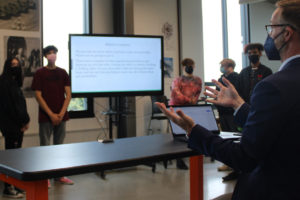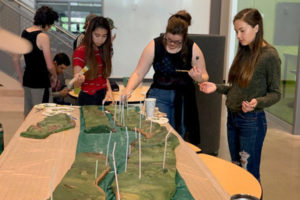The construction crews and Camas School District administrators are hard at work to solidify the nooks and crannies of the district’s first project-based learning (PBL) high school as the physical building and organizational details for Discovery High School are in the final stages.
The high school is set to open and serve 120 freshmen students starting this fall, for the upcoming 2018-19 school year.
Discovery High, the new home of the phoenix, is the third high school option for Camas students and will complement Odyssey Middle School in delivering flexible, personalized instruction to students through collaborative work on projects that dive into curriculum that satisfies the state standards of learning.
“We’re really excited to offer this additional opportunity,” Aaron Smith, principal of both Discovery and Odyssey, said. “In my opinion, this is not an alternative education, this is an additional opportunity that is more aligned with what colleges and employers are asking for–which is for students and employees that know more than content, and who are really able to work with other people, collaborate and to create, adapt and innovate because our economy and world changes almost by the hour.”
The schools stand adjacent to each other on the project-based learning campus formerly occupied by Sharp Electronics Corporation, at 5780 Pacific Rim Blvd., Camas.



